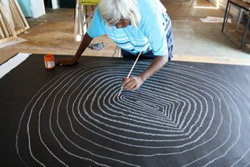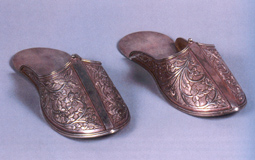
Case Studies, Crafts, Handlooms, Art
Examining the Aboriginal Art Centre Model: A Case Study
Wood, Sharmila
October, 2010
This is a brief case study of the structure of Aboriginal art centres in Australia. The purpose of this case study is to examine a model that could be applied to other craft centres, in India and elsewhere. It does not propose how the Art centre structure could be applied in different contexts; it instead, provides an overview of the governance, legal and organizational framework of an Aboriginal art centre. A key element of the Art Centre model is that Aboriginal artists having control over the key decision making, priorities, and strategic direction of the centre, and have a stake in administering their own affairs. Successful art centres have been best practice models of livelihoods and enterprise development that provide a co-operative structure, that effectively services it artist/members.
ABORIGINAL ART CENTRESAboriginal Art Centres are broadly defined as locally owned and managed Aboriginal Arts enterprises that support the production and marketing of diverse works of art and craft.1 They are commercially focused organizations, that reflect the values, and distinctiveness of Aboriginal cultures. Their aim is to provide access to independent incomes for Aboriginal people living in remote communities, and to share business experience. They are usually operated as non-profit co-operatives, with artists earning a percentage of each painting, or art object that is sold. The remaining amount is absorbed back i... |
This is a preview. To access all the essays on the Global InCH Journal a modest subscription cost is being levied to cover costs of hosting, editing, peer reviewing etc. To subscribe, Click Here.
ALSO SEE
Framing the Fluid Multiple Perspectives on Bhar...
Johar, Navtej
The Tradition of Foot Covering in Indian Cultur...
Pathak, Anamika



